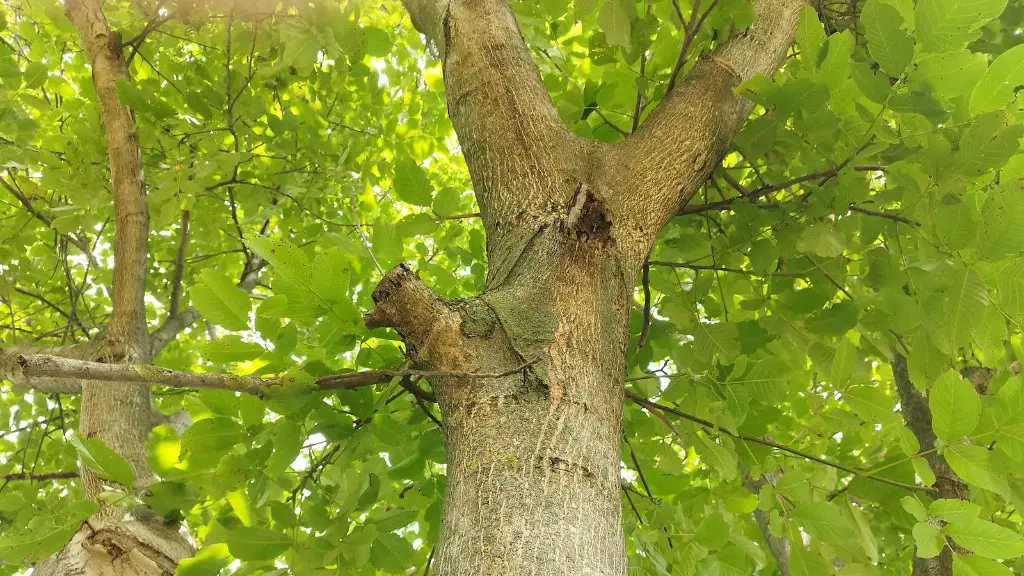Contrary to popular belief, lemons do not freeze on the tree. The temperature has to be a consistent 28 degrees Fahrenheit or lower for an extended period of time before the lemons will freeze. When the temperature drops to this low 28 degree reading, the tree is in danger. While the fruit might freeze, the tree itself normally survives.
What happens when the temperature dips below 28 degrees Fahrenheit? The lemon skins will freeze and thaw back repeatedly, damaging the texture of the fruit. The oils that are typically found in the rind and the pith will also be depleted by this process. The juice inside the lemon will freeze, too.
But what if the temperature gets even colder? If temperatures dip below 14 degrees Fahrenheit and stay there for more than a few hours, the plant cells will undergo what is known as cell death. At this temperature, all parts of the lemon tree will suffer from damage, including the foliage and the fruit.
What can be done to protect the lemon tree from such cold temperatures? For starters, lemon trees should be kept as far away from wind as possible. Wind chill can make it feel way colder than it actually is. When the temperature approaches 28 degrees Fahrenheit and below, the lemon farmers should use cloches and fleece to cover the tree.
What kind of effect do extreme temperatures have on the tree? Cold temperatures activate a process known as acclimation, where the tree experiences a drop in photosynthetic activity and the production of starch. The high-energy sugars, also known as photosynthate, are increasingly used for respiration. For example, the respiration rate is increased during the coldest temperatures.
What about the fruit itself? Frost and cold temperatures will cause irreparable damage to the lemons on the tree. The lemon wood and leaves are usually affected by cold, while the fruit itself will begin to discolor. The peel will begin to crack as the temperature drops further and the juice inside will freeze.
Therefore, it is important for farmers to use all the right precautions when the temperature drops below 28 degrees Fahrenheit to ensure that their lemon trees and the crops remain safe. Regular maintenance and attention to weather forecasts will certainly go a long way in protecting the lemon tree from any cold-related damage.
Effects of Cold Temperatures on the Fruit
When temperatures drop to below 28 degrees Fahrenheit, the texture of the fruit itself is compromised. The oil that adheres to the rind and pith of the lemon freeze and thaw repeatedly, damaging the skin tissue. The juice in the lemon itself will freeze, too.
When the temperature gets below 14 degrees Fahrenheit, this is considered to be the threshold at which cell death occurs. In these extreme conditions, all parts of the lemon tree will suffer damage. Not only will the limbs, leaves and foliage of the tree be affected, but the fruit itself will discolor and start to crack. The peel and pith of the lemon will suffer excessive damage as a result.
To further protect the lemon tree and the fruit, it is important to use cloches and fleece to cover the tree when the temperature drops to cold temperatures. This will help maintain the proper temperature and moisture levels to ensure that the fruit remains safe and the trees healthy.
Once the temperature drops below 28 degrees Fahrenheit, it is also important to check the tree on a regular basis. This will help ensure that any damage to the fruit is moderate and that any dead leaves or limbs can be quickly removed in order to minimize any potential losses.
The farmers should also pay close attention to the weather in order to be able to predict when cold temperatures might be approaching. This will allow them to take the necessary precautions in time to protect the trees and crops.
Impact of Cold Temperatures on the Tree
It is important to understand the impact of cold temperatures on the lemon tree itself. When temperatures dip below 28 degrees Fahrenheit, the process of acclimation is activated within the tree. This process refers to the decreased generation of photosynthate, in turn leading to an increase in respiration.
This is a critical issue because when respiration levels are high due to cold temperatures, photosynthesis is stunted, meaning the tree is not able to absorb its needed carbon dioxide in order to create energy. When respiration rates remain high during the winter, the tree is also left vulnerable to cold-related damage.
Therefore, it is important for the farmers to stay vigilant and keep an eye on the weather in order to be able to minimize any damage to the lemon tree due to extreme temperatures. Using cloches and fleece to cover the tree when the temperature approaches 28 degrees Celsius and below will go a long way in protecting the tree from any cold-related damage.
Furthermore, regular maintenance of the tree is important in order to check for any damage that might have occurred due to the cold temperatures. This will help ensure that the trees remain healthy, and any losses of fruit and foliage will be kept to a minimum.
Precautions to be Taken
When the temperature approaches 28 degrees Fahrenheit and below, the farmers should take the necessary precautions to protect the lemon tree from any cold-related damage. Wind chill is especially dangerous in this circumstance and the lemon tree should be kept as far away from it as possible. This will help minimize the risk of any unnecessary damage.
Meanwhile, using cloches and fleece to cover the tree will help maintain the proper temperature and conditions for the tree to survive, should the temperature continue to drop below 28 degrees Fahrenheit.
Regular maintenance of the tree is essential to check for any damage and to ensure that no lasting effects occur. Checking the tree on a regular basis will also help the farmers identify any dead leaves or limbs, and they can be removed in order to minimize any losses.
To ensure that their lemon tree and crops remain safe, it is important for the farmers to stay on top of weather forecasts and be prepared to take the necessary precautions when the temperature drops below 28 degrees Fahrenheit.
Effects of Low Temperatures on Lemon Juice
The juice contained within a lemon is generally affected by cold temperatures. When the temperature drops, the texture of the lemon itself is compromised, leading to the depletion of oil from the peel, pith and juice contained within the fruit.
The juice contained within the lemons will freeze, too. When the temperature drops to below 14 degrees Fahrenheit and remains there for more than a few hours, the cells within the juice will begin to suffer, leading to the loss of flavor, nutrient content and color. This will further lead to a decrease in the overall quality of the lemon juice.
To prevent this from happening, and to ensure that the lemon juice obtained from the fruit remains of high quality, it is important for the farmers to take necessary precautions when the temperature is approaching 28 degrees Fahrenheit, or lower. Caring for the tree and providing necessary protection will ensure the quality of the lemon juice.
To ensure that the lemon juice remains of high quality, the farmers should pay close attention to the weather forecasts and take necessary precautions in time to protect the fruit from any cold-related damage. Using cloches and fleece to cover the tree when the temperatures drop will also help maintain the quality of the lemon juice.
It is also important to check the tree on a regular basis to check for any damage that might have occurred due to cold temperatures. This will help ensure that the lemon juice obtained from the tree remains of high quality.
Effects of Cold Temperatures on Photosynthesis
When temperatures drop to below 28 degrees Fahrenheit, photosynthesis levels tend to decrease. This means that the tree is not able to take in its required amount of carbon dioxide to generate energy. This in turn increases the respiration rate of the tree, leading to the depletion of energy.
This slowing down of the photosynthesis process in cold temperatures might lead to an overall decrease in the growth of the tree and the fruit itself, leading to losses in terms of both quality and quantity. In extreme cases, it might even be lethal to the tree.
Therefore, it is important for the farmers to take the necessary precautions when the temperature approaches 28 degrees Fahrenheit to ensure the safety of the tree. Using cloches and fleece to cover the tree when the temperature drops to below 28 degrees Celsius is essential for protecting the tree from any cold-related damage.
Furthermore, regular maintenance of the tree is important to check for any damage due to cold temperatures, as well as to ensure that the tree can continue to receive its required carbon dioxide in order to generate energy. The farmers should stay up-to-date with weather forecasts and take measures in time to protect the tree.



